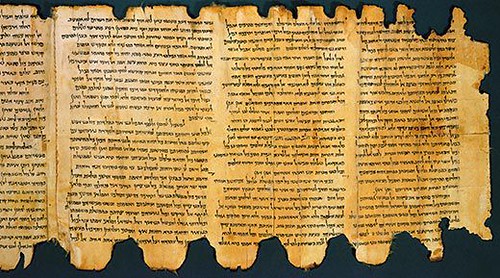The Dead Sea Scrolls are made available to the public.
On this day in 1991, California’s Huntington Library released microfilm of the Dead Sea Scrolls, providing independent researchers with access to a cache of immensely important ancient manuscripts that had hitherto been confined to a small group of scholars.
The Dead Sea Scrolls date from about two thousand years ago. They were found in caves above the northwestern shore of the Dead Sea, a saltwater lake which is not only the world’s saltiest, but also the deepest, and at the lowest elevation, 400 metres below sea level. It is located between Israel and Jordan, where the climate is arid and conducive to the preservation of ancient manuscripts.
The first group of scrolls was discovered in 1947 by a young Bedouin shepherd in search of a lost goat. In a cave, he found jars filled with ancient scrolls and fragments of texts. During the next decade, archaeologists and Bedouins discovered ten additional caves containing ancient manuscripts. Most of the manuscripts were of leather and papyrus. They include all but one of the books of the Old Testament, some almost complete, as well as other fragments in languages including Greek, Hebrew, and Aramaic. As to the people who hid the scrolls in the caves, one likely theory is that refugees from Jerusalem deposited the scrolls during the Jewish-Roman war.
Many of the longer scrolls were deciphered, published and translated soon after their discovery. However, the more fragmentarily preserved manuscripts were in the hands of an official group of editors who had been assigned to do this work by the governments of Jordan and Israel. Unfortunately, the pace was slow, and access to the manuscripts was limited to the editorial team.

